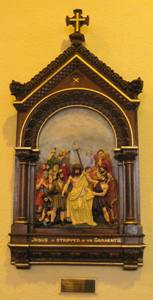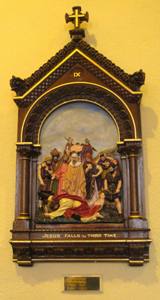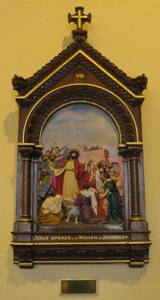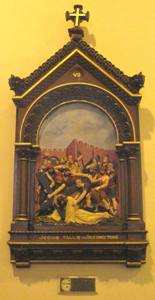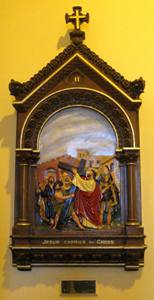The Eleventh Station
Jesus Is Nailed To The Cross
Two men are nailing Jesus’ hands to the cross – his feet have not been nailed as yet. In fact, the practice was to drive the nails through the wrists rather than the palms and through the heels just in front of the Achilles tendons rather than through the insteps. There would have been no footrest or, at best, a very basic one. Also, Jesus would have been completely naked – this was meant to be a shameful death as well as a very painful one.
The youth who has been carrying the INRI notice is unable to watch the nailing and covers his eyes. Jesus’ mother lifts her arms in anguish and the man in green behind her covers his face.
The dedication on the brass plate below the tableau is:
| IN AFFECTIONATE REMEMBRANCE OF THE PARENTS, BROTHERS AND SISTERS OF EDMUND AND STATIA DUNPHY, BALLYBRENOCK |


